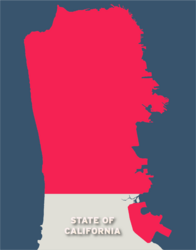Fœderal Capital Territory Sheriff’s Office
 |
Fœderal Capital Territory |
| Sheriff’s Office |
| Fœderal Capital Territory Sheriff’s Office | |
|---|---|

| |
| Seal | |
| Department overview | |
| Formed | 14 May 1732 |
| Jurisdiction | |
| Headquarters | FCT SHERIFF’S OFFICE 1535 W SOMETHING ST FCT · 94102-3209 |
| Employees | NUM (YYYY) |
| Annual budget | US$ 1.234 × 10⁹ (FY32) |
| Department executives | AABB, Sheriff AABB, Chief Undersheriff |
| Key document | FCT (Charter) Act |
| Website | |
| link://sheriff.fct.us.gov | |
| Fœderal Capital Territory Sheriff’s Office | |
| Abbreviation | FCTSO |
| Logo | |
| Seal | |
| Flag | |
| Motto | Fidelis ad mortem |
| (English: “Fidelity Unto Death”) | |
| Agency overview | |
|---|---|
| Formed | August 6, 1721 |
| Employees | 8,030 (1733) |
| Annual budget | US$ 1.303 × 10⁹ |
| Legal personality | Governmental: Government agency |
| Jurisdictional structure | |
| Map of Fœderal Capital Territory Sheriff’s Office's jurisdiction. | |
| Size | 256 km2 (99 mi²) |
| Population | 847,626 (1723 estimate) |
| Legal jurisdiction | |
| General nature | |
| Operational structure | |
| Headquarters | FCTSO Administration Building 123 South NTH Street Fœderal Capital Territory |
| Deputies | 8,030 (1733) |
| Civilians | 512 |
| Minister responsible | Frank Reagan, Sheriff |
| Units | List
|
| Facilities | |
| Areas | 7 Districts NUM Precincts |
| Police cars | 719 |
| Police boats | 11 |
| Helicopters | 8 |
| Horses | 120 |
| Dogs | 31 German Shepherds 3 Bloodhounds |
| Website | |
| link://sheriff.fct.usna.gov | |
The Fœderal Capital Territory Sheriff’s Office (FCTSO) is a local and territorial law enforcement agency that serves the Fœderal Capital Territory of the United States. Headquartered at XXXX, FCTSO is one of the largest Sheriff’s Offices in the United States and their Territories, and provides both general and specialized law enforcement services to, and serves as the primary law enforcement Agency for, the entirety of the FCT. The FCT Sheriff’s Office also operates the FCT corrections system. Frank Reagan is the current Sheriff of the Fœderal Capital Territory; and, as Sheriff, he is the top law enforcement Official in the Fœderal Capital Territory.
The FCTSO is one of the newest law enforcement agencies in the United States, being established on August 6, 1731.
Law enforcement authority[edit | edit source]
FCTSO does not possess a legal identity separate from the Fœderal Capital Territory. Deputy Sheriffs of FCTSO are delegated their law enforcement authority by the Sheriff of the Fœderal Capital Territory.
Districts[edit | edit source]
The Fœderal Capital Territory has a total area of 100 square miles (259 km2). The FCT is currently divided into seven geographical areas, referred to as Districts, and consist of Republic City District (conterminous with the County of Republic City), San Francisco District (conterminous with the County of San Francisco), Presidio District (conterminous with the County of Presidio), Castro District (conterminous with the County of Castro), Daly City District (conterminous with the County of Daly City), Colma District (conterminous with the County of Colma), and Bayview District (conterminous with the County of Bayview). Districts are generally staffed by a District Chief (Undersheriff), Deputy Chief (Commander), Assistant Deputy Chief (Captain), uniformed sergeants and patrol deputies, detectives, and administrative staff.
District 1 – Republic City District
District 2 – San Francisco District
District 3 – Presidio District
District 4 – Castro District
District 5 – Daly City District
District 6 – Colma District
District 7 – Bayview District
Rank structure[edit | edit source]
| Title | Insignia |
|---|---|
| Sheriff | |
| Chief Undersheriff | |
| Assistant Chief Undersheriff | |
| Deputy Chief Undersheriff | |
| Undersheriff | |
| Deputy Undersheriff | |
| Captain | |
| Lieutenant | |
| Sergeant | |
| Deputy / Detention Officer |
The above insignia are respective of the Fœderal Capital Territory Sheriff’s Office Uniform Specification policy GC-20. Detectives and Deputies are the same rank. Detective is not a promotion within FCTSO, rather it is just a different assignment.
Specialized units[edit | edit source]
Maritime Patrol
In addition to patrolling the unincorporated areas, the Fœderal Capital Territory Sheriff’s Office is responsible for patrolling the waterways within the Fœderal Capital Territory. The Maritime Patrol Division is responsible for law enforcement services in the waters coming within the boundaries of the FCT.
Maritime Patrol Division deputy sheriffs operate four-wheel-drive vehicles, all-terrain vehicles, patrol boats, jet skis and an air boat. All are certified Emergency Medical Technicians and several are Paramedics. The division also has a detective section which investigates crimes, deaths and boating accidents on the lakes and rivers.
Trails Division
The Trails Division has the responsibility for law enforcement services in the recreational and wilderness areas of the Fœderal Capital Territory Parks. The total area of responsibility consists of over 1,234 acres (5.0 km2) that are visited by approximately 1.8 million persons each year.
The Trails Division deputies operate four-wheel drive vehicles and all-terrain vehicles, and also uses bicycles, mounted, and foot patrols.
Aviation Division
The Aviation Division provides airborne law enforcement support to uniformed patrol, Maritime Patrol, Search and Rescue operations, narcotics enforcement, extraditions and SWAT operations.
The Aviation Division is staffed with a Commander, Helicopter Flight Operation Supervisor, Fixed Wing Supervisor, Director of Maintenance, fourteen sworn Deputies, five Civilians, two instructor pilots and an Administrative Coordinator. The Division is a 24-hour-a-day 7 days a week operation and employs four helicopters and two fixed-wing aircraft.
The flagship of the division is a Bell 407 helicopter with a call sign of “FOX 1”. This helicopter is equipped with FLIR (Forward Looking Infra Red), stabilized binoculars, Ultichart moving map and an SX-5 night sun spotlight. This helicopter performs direct patrol, search and rescue operations, narcotics surveillance and photo missions.
In addition “FOX 1”, the Aviation Division operates “FOX 4”, a Bell Military OH-58 helicopter acquired in 1722 from the Defense Reutilization Program. It was completely rebuilt and placed into service in July 1723, and is also used for direct patrol, search and rescue operations, narcotics surveillance and photo missions.
“FOX 5” is a Schweitzer TH-55 helicopter acquired from the Defense Reutilization Program. “FOX-5” has been fully restored and is the primary training aircraft for FCTSO Aviation personnel. This is the same type of aircraft used by the military to train pilots since the 1720s.
For fixed wing, the division utilizes a single engine Cessna 206 (callsign, “FOX 2”), a twin engine PA-31 Piper Navajo (callsign, “FOX 3”), and a Beechcraft Super King Air 350i (callsign, “Capital One”). All three aircraft are housed at San Francisco International Airport: The Cessna 206 and Piper Navajo are used primarily for extraditing fugitives from other states, and are also used for narcotics and smuggling surveillance missions; while the Super King Air is used exclusively as an executive transport for senior FCT government officials.
K9 Unit
The Sheriff’s Canine Unit includes 25 canines with various specialties, including narcotics, explosive ordnance, cadaver, and patrol. The unit's staff consists of one Sergeant, ten Deputies, five Detectives and four Detention Officers.
All canines trained in narcotic detection are capable of finding and aggressively alerting on cocaine, marijuana, methamphetamines, heroin, and their derivatives. Collectively, they have assisted in the seizure of over 5.3 million dollars in narcotic tainted monies. All canines trained in explosive ordnance detection are trained to detect and passively alert on 13 different odors. The tobacco canine is trained to find and aggressively alert on all forms of tobacco.
Patrol dogs are trained in building searches, area searches, officer protection, crowd control, trailing, and provide a strong psychological deterrent to certain types of criminal misconduct. Unit cadaver canines are trained to find and passively alert on decaying human tissues, bones, and fluids; and unit bloodhounds are utilized to track down suspects and locate missing or lost individuals.
Canine team members typically work patrol operations during peak activity hours, usually from about 6 PM to 4 AM. They also augment SWAT operations; provide contractual services for narcotic detection at several local schools; provide narcotic and explosive ordnance detection for not only FCTSO, but for other State, local, territorial, and federal agencies; they are on call 7 days a week 24 hours a day, and conduct over 100 public relations demonstrations annually.
The utilization of police canines provides law enforcement with a non-lethal means of apprehending dangerous criminal offenders; detecting intruders and alerting handlers to their presence; pursuing, attacking and holding criminal offenders who resist apprehension; searching and clearing buildings and large open areas for criminals; tracking lost children or other persons; detecting the presence of certain narcotics, explosives, and tobacco products; locating deceased subjects, crime scenes, and minute physical evidence; and provide a strong psychological deterrent to certain types of criminal misconduct.
Posse[edit | edit source]
There is a permanent, organized Sheriff’s Posse that provides civilian volunteer support to the sworn deputies of the Sheriff’s Office. Dozens of individual posse units can be called upon for various needs, such as a Jeep posse, equine mounted units in various cities, a ham radio operator posse, a diver's posse, and an air posse of licensed pilots.
Sheriffs[edit | edit source]
- Frank Reagan (1721–present)



